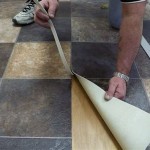Essential Aspects of Installing Laminate Flooring on Basement Floor
Transforming your basement with laminate flooring can elevate its aesthetics and functionality. However, successful installation requires careful planning and attention to specific aspects to ensure a durable and visually appealing outcome.
1. Subfloor Preparation
The condition of the subfloor is paramount. It should be level, dry, and free of debris. Remove any existing flooring or carpet, and check for moisture or unevenness. If necessary, level the floor using self-leveling compound or plywood underlayment to create a smooth and stable base for the laminate flooring.
2. Moisture Control
Basements are prone to moisture issues, which can damage laminate flooring. Install a vapor barrier between the subfloor and laminate to prevent moisture from seeping up. Additionally, ensure proper ventilation by installing dehumidifiers or fans to control humidity levels.
3. Underlayment
An underlayment is an essential layer that provides cushioning, insulation, and sound reduction. Choose an underlayment suitable for basement installations, such as polyethylene foam or cork, which can withstand moisture and provide insulation against cold floors.
4. Laminate Flooring Selection
Not all laminate flooring is created equal. Select a flooring option specifically designed for basement installations, featuring moisture-resistant and durable characteristics. Consider the thickness and AC rating (abrasion class) to ensure it can withstand the wear and tear of a basement environment.
5. Expansion Gaps
Laminate flooring expands and contracts with temperature changes. To prevent buckling, leave expansion gaps around the perimeter of the room and between the flooring and any fixed objects, such as walls, cabinets, or fireplaces. Use spacers to maintain a consistent gap throughout the installation.
6. Installation Method
Laminate flooring can be installed using two main methods: floating or glued. For basement installations, the floating method is recommended, as it allows the flooring to move freely with temperature and moisture fluctuations. This method involves locking the planks together without the use of glue.
7. Transition Strips and Moldings
Transition strips and moldings provide a seamless transition between the laminate flooring and other flooring types or changes in elevation. Choose transition strips that match the color and style of the laminate flooring to create a cohesive look.
8. Maintenance and Cleaning
Regular cleaning and maintenance are essential to extend the life of laminate flooring. Use a broom or vacuum cleaner for daily cleaning, and occasionally mop with a pH-neutral cleaner. Avoid using harsh chemicals or abrasive materials that can damage the surface.

Laminate Flooring On Concrete Basement Floors Expert Installation Guide Csg Renovation

How To Install Vinyl Or Laminate Floors In A Basement Over Concrete Slab

Lvp Flooring Installation How To Install Luxury Vinyl Plank In A Basement Diy

Laminate Flooring On Concrete Basement Floors Expert Installation Guide Csg Renovation

Installing Laminate Flooring Over Concrete The Ultimate Guide Aa Floors

How To Install Laminate Floor In A Basement

Diy Installing Laminate Floors Basement Update House To Home

Take These Precautions Before Installing Laminate Flooring In A Concrete Basement

Laminate Flooring In Basement Install A Floating Floor Over Existing Tile The Money Pit

Leveling Concrete Basement Floor Before Laying Laminate Doityourself Com Community Forums
Related Posts








